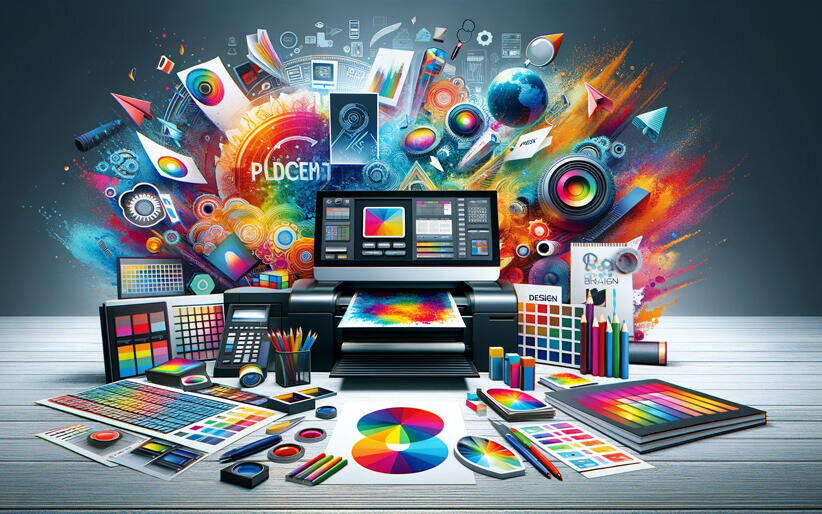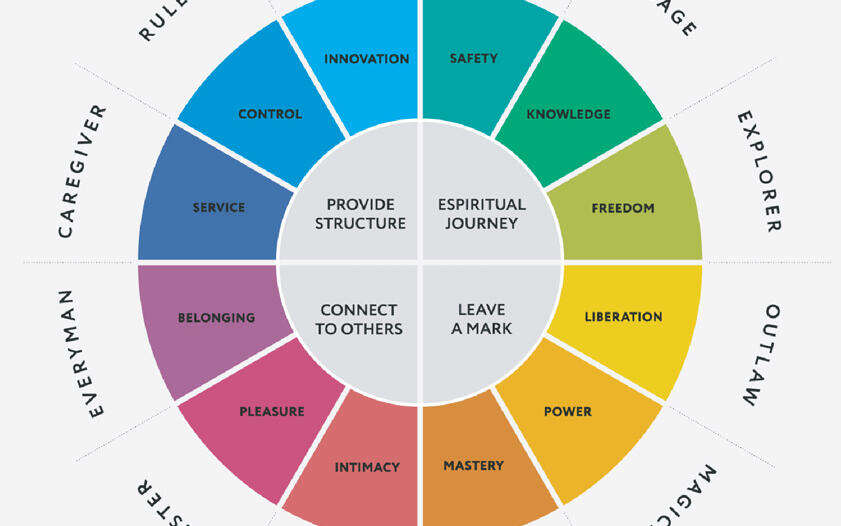Introduction
Welcome to the fascinating world of fonts—a realm where each stroke, curve, and angle can evoke a myriad of emotions and perceptions. Have you ever stopped to consider why certain fonts make you feel a certain way? Or why some brands stick to a particular typeface across all their marketing materials? The answers lie in the psychology of fonts, a subject that delves deep into how typography influences not just aesthetics but also customer perception and behaviour. In this comprehensive guide, we'll unravel the power of fonts as more than just letters on a screen or paper. They are, in fact, potent branding tools that can make or break your brand's image.
The Importance of First Impressions
We've all heard the saying, "You never get a second chance to make a first impression." This adage holds true in the realm of typography as well. The moment a visitor lands on your website or picks up your brochure, the font you've chosen starts speaking for your brand. It sets the tone and creates an immediate impression, even before the reader has processed a single word of the content.
For instance, if you walk into a luxury store and see all the signage in Comic Sans, you'd probably question the brand's credibility. On the other hand, an elegant script or a classic serif font like Didot can evoke feelings of sophistication and luxury, aligning with the brand's image.
Studies have shown that fonts can evoke specific emotional responses. A 2012 study by Wichita State University found that fonts could be categorized into emotional adjectives like "happy," "relaxed," and "imaginative." Therefore, the choice of font can be a strategic decision that impacts how your brand is perceived.
Serif vs. Sans Serif: The Psychological Battle
When it comes to fonts, one of the most fundamental distinctions is between serif and sans-serif typefaces. Serif fonts, like Times New Roman or Georgia, have small lines or strokes attached to the ends of their letters. In contrast, sans-serif fonts, like Arial or Helvetica, lack these embellishments.
But what do these differences mean psychologically?
Serif Fonts: The Traditionalists
Serif fonts are often seen as more traditional, reliable, and formal. They're the go-to choice for academic papers, legal documents, and other formal applications. A study published in the Journal of Marketing Communications found that serif fonts are perceived as more trustworthy, which could be why they're often used in newspapers like The New York Times.
Sans Serif Fonts: The Modernists
Sans-serif fonts are viewed as modern, clean, and accessible. They're commonly used in digital platforms and are considered easier to read on screens. Brands aiming for a contemporary, minimalist vibe often opt for sans-serif typefaces.
It's worth noting that the emotional impact of these fonts can vary based on cultural and contextual factors. For example, a serif font might evoke feelings of nostalgia or tradition in one context but could be seen as outdated in another.
The Handwritten Menu Effect
Imagine walking into a health-focused restaurant and picking up a menu. What if the menu is written in a handwritten font? According to a study from Ohio State University, you're more likely to perceive the food as healthier and even share your experience on social media. This phenomenon is known as the "Handwritten Menu Effect."
The study suggests that the handwritten font gives a human touch to the menu, signalling that more effort and care have been put into the food preparation. However, this effect is specific to restaurants that brand themselves as health-focused. In a fast-food setting, the font choice may not have the same impact.
Readability and Accessibility: More Than Just Aesthetics
When choosing a font, it's easy to get caught up in how it looks, but readability and accessibility are equally important. Fonts like Arial and Helvetica are often praised for their readability, especially in long-form content. Generous letter spacing and distinct characters can improve the reading experience, making it easier for the audience to absorb the information.
But readability isn't just about comfort; it's also about inclusivity. Making your type just one point larger can significantly help those with poorer eyesight. Additionally, ensuring enough contrast between the text and the background can make your content more accessible to people with visual impairments. A study by the Journal of Vision found that higher contrast can improve reading speed, particularly for older adults.
Cultural and Contextual Factors: The Unseen Influencers
Your cultural experiences shape your font associations, and these associations can differ across countries and writing systems. For example, what might be considered a "fun" font in one culture could be seen as unprofessional in another. The context in which a font is used can also drastically change its impact. Comic Sans might be appropriate for a children's party invitation but could be disastrous for a business contract.
Context extends beyond just the medium. A 2017 study published in the Journal of Consumer Psychology found that the context in which a product is used can influence how the font on its packaging is perceived. For instance, a rugged, bold font might be perfect for outdoor gear but seem out of place on a luxury perfume box.
Case Studies and Real-world Examples: Fonts in Action
Understanding the theory behind font psychology is one thing, but seeing it in action can be truly eye-opening. Let's look at some real-world examples:
Coca-Cola: The Power of Custom Fonts
Coca-Cola's iconic script font is instantly recognizable and evokes feelings of nostalgia and happiness. The custom font aligns perfectly with the brand's image and has become synonymous with the product itself.
Apple: Minimalism and Modernity
Apple uses the San Francisco font, a sans-serif typeface, across its products and marketing materials. The font's clean lines and modern look reflect the brand's focus on design and innovation.
The New York Times: Trust and Authority
The New York Times uses a custom version of the Cheltenham typeface, a serif font. This choice aligns with the newspaper's aim to be seen as a reliable and authoritative source of information.
These examples demonstrate how the choice of font can be a strategic decision that significantly impacts brand perception.
Conclusion: The Lasting Impact of Fonts
As we've explored throughout this guide, fonts are far more than just decorative elements. They're powerful tools that can evoke emotions, influence behaviour, and shape perceptions. Whether you're a marketer, a designer, or simply someone interested in the nuances of communication, understanding the psychology of fonts is invaluable.
The next time you're faced with the task of choosing a font, remember: it's not just about aesthetics. Your choice will send a message before a single word is read, so choose wisely.
References
- "Emotional and persuasive perception of fonts," Journal of Marketing Communications, Link
- "The ultimate font face-off: Serif vs sans serif in the psychological battle of font personalities," Type Tasting, Link
- "How typeface influences the way we read and think," Journal of Vision, Link
- "Love is in the menu: Leveraging healthy restaurant brands with handwritten typeface Link
- "The Aesthetics of Reading," Journal of Consumer Psychology, Link








Comments (0)
Add a Comment